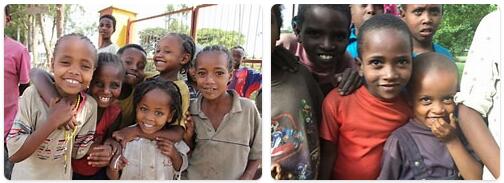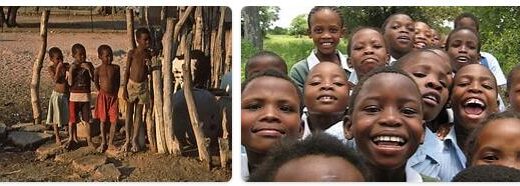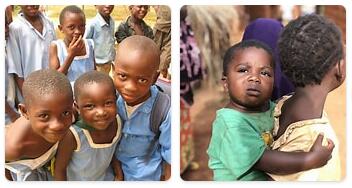Ethiopia 2014
Yearbook 2014
Ethiopia. Ethiopia population in 2020 is estimated at 114,963,599. Ethiopia was affected by the civil war in South Sudan, and the government hosted negotiations on a ceasefire in the neighboring country. In January, an agreement was concluded in Addis Ababa between the government of South Sudan and rebels following fighting that was said to have claimed up to 10,000 lives.

At least a quarter of a million South Sudanese refugees were in Ethiopia. When the total number of refugees during the year was about 630,000, Ethiopia became the country in Africa with the highest number of refugees. The UN Refugee Commission acknowledged the Ethiopian government for the “open door policy” that allows people from neighboring countries such as Sudan, South Sudan, Somalia and Eritrea to seek refuge in the country.
At the same time, the regime was facing severe oppression of dissenters and opposition Ethiopians. According to Human Rights Watch (HRW), Ethiopia used the anti-terrorist law for silence and imprisonment. HRW reported that security forces brutally hit demonstrators in April in several cities in western Ethiopia, where dozens of people were shot to death, according to eyewitnesses.
US Secretary of State John Kerry visited Addis Ababa in May and urged the government to strengthen freedom of the press and other civil liberties. Among other things, he expressed concern for a group of regime-critical bloggers and journalists who were arrested. Many journalists were imprisoned, such as the dissident and blogger Eskinder Nega, sentenced to 18 years in prison. Independent media is regularly shut down and several journalists have moved out of the country.
In July, seven arrested bloggers and three journalists were indicted for terrorist offenses. They were indicted for ties to the illegally declared opposition group Ginbot 7, which is in exile in the United States. The prosecutor claimed that the regime-critical blog Zone 9 was the cover for terrorist offenses. HRW condemned the prosecution, saying Ethiopia uses a harsh anti-terror law to silence bloggers and journalists. In October, three newspaper owners were sentenced to just over three years in prison, accused of incitement to violent revolts. Reporters Without Borders described the verdict as shocking. That same month, a journalist was sentenced to three years in prison on charges of slander and incitement.
A report from Save the Children showed a reduction in maternal mortality in Ethiopia more than in the rest of Africa. Pregnancy-related deaths had gone down from one in 24 to one in 67 since 2000. According to Save the Children, it was due to girls’ education and the fact that the government employed about 30,000 health care workers, type of nurses, for preventive and curative care. Everyone is a woman who can easily talk to women about family planning, pregnancies, childbirth and childcare. Considering the country’s drought and food shortages, according to Save the Children, Ethiopia is an example of targeted investments delivering results even in difficult areas.
According to topb2bwebsites, Ethiopia’s economy has seen average growth of about 10% per year for a decade, and the service sector has gone beyond agriculture even though agricultural products account for most exports. The proportion of people living below the poverty line has fallen from 45 to 29% between 1996 and 2012, but the average annual income is only about SEK 2,600.
Public employees earn about SEK 270 a month. This is also the salary of the textile factories that now produce for the Swedish clothing giant H&M State Swedish Swedfund decided during the year to invest in two of these factories with the motivation to fight poverty through job creation and sustainable entrepreneurship.


